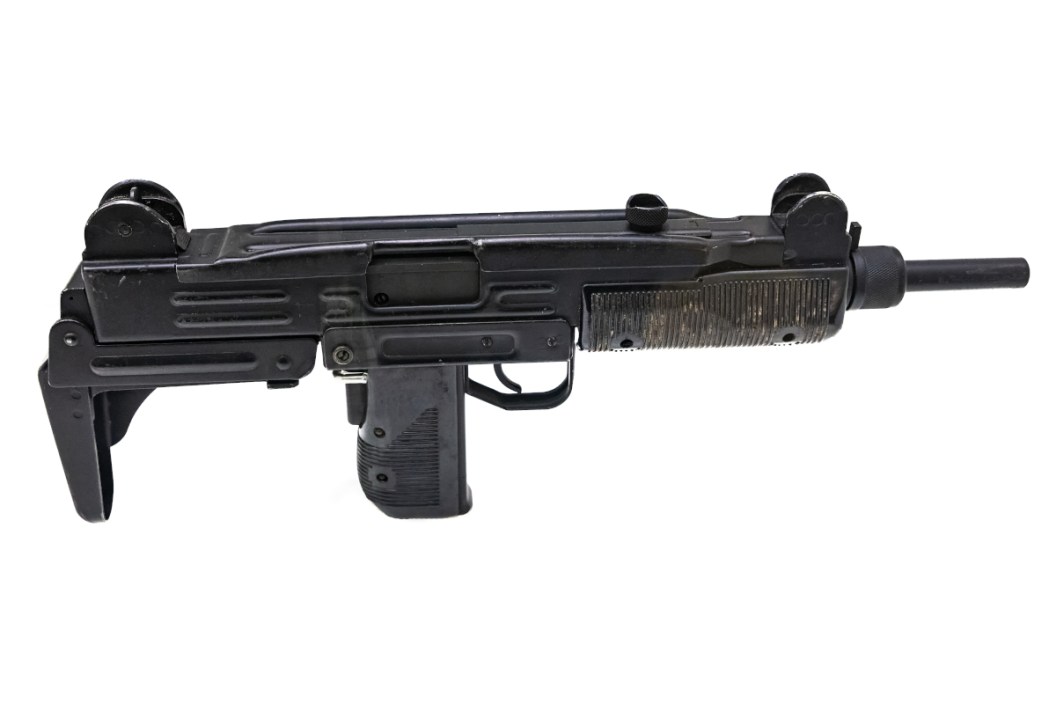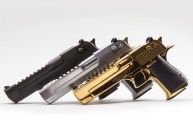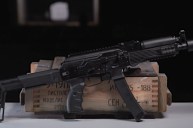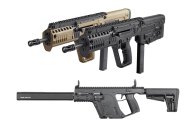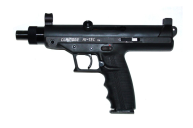The Uzi submachine gun is one of the most recognizable in the world.
When it comes to firearms, there are some that are easily recognizable just based on their profile alone. The iconic Israeli-made Uzi is one of them. First utilized by the Israel Defense Force, this gun has gone on to live a long life in the hands of special forces and law enforcement worldwide. In the 1980s, the gun became a staple of almost every action movie ever made.
This gun is famous enough that even people who are not gun enthusiasts know the named "Uzi." How did one machine pistol develop such a following? And what is the history behind this fascinating firearm?
We will dive fully into the history of the Uzi SMG today and attempt to answer many of the Internet's burning questions about this iconic firearm. This is everything to know about the Uzi.
A quick history of the Uzi.
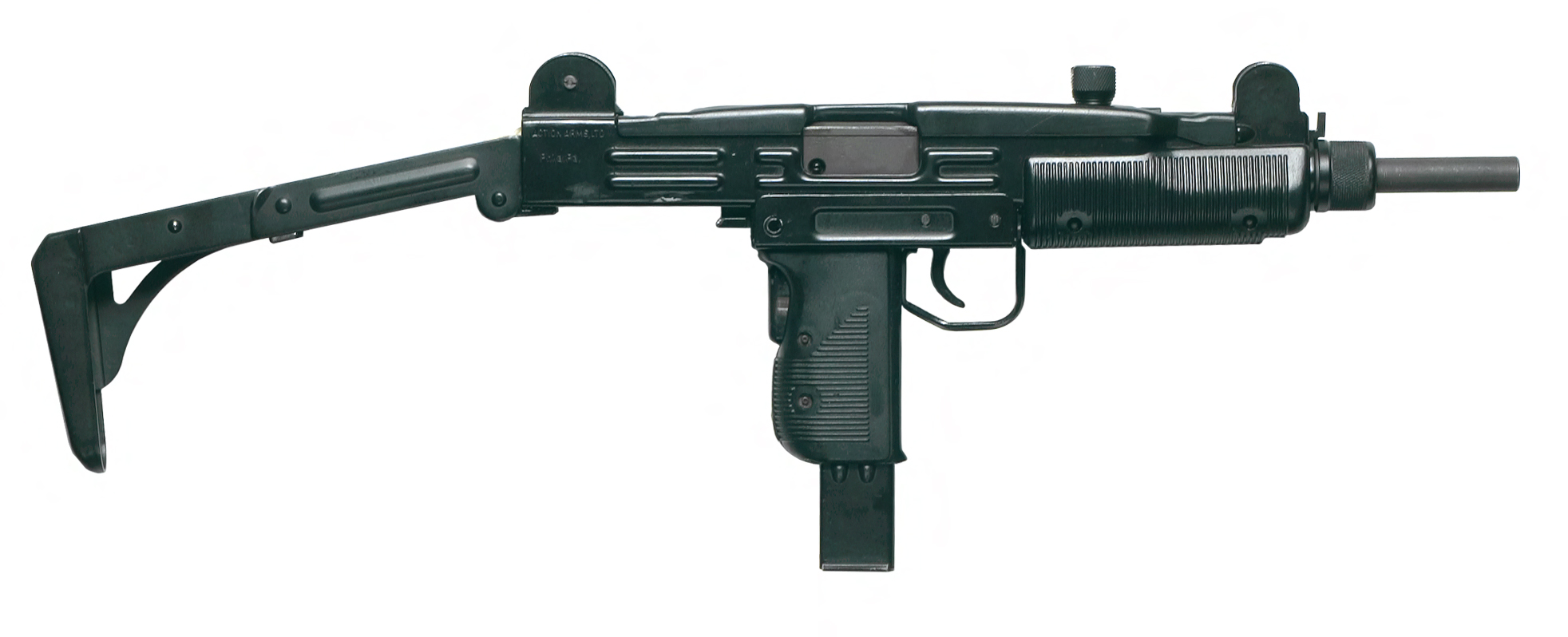
Wikimedia Commons: U.S. Air Force
The blowback-operated Uzi became most famous in the 1970s and 80s, so it might surprise some people to learn that the design dates to the late 1940s, after the end of World War II. The designer was a man originally named Gotthard Glas. He later changed his name to the one most firearms enthusiasts recognize, and that is Major Uziel Gal. Born in Germany in 1923, Gal barely escaped Germany before the Nazis took over. He was imprisoned for illegally carrying a gun in Palestine in 1943. He served less than half of a six-year prison sentence. However, he used that time in prison to study engineering. Shortly after that he joined the military and in 1948, he served in the Arab-Israeli War.
Gal finished his first prototype of what eventually became the Uzi in 1950. A few years later, he had finalized the design and by 1954 the Israeli Defense Force (IDF) took a great interest in the open-bolt firearm's rate of fire and ease of use. The Uzi pistol was a great fit because of the simplicity, both of the design and in the manufacturing process because Israel did not have a lot of resources and facilities to manufacture larger, more complex guns at the time. It was soon a standard issue weapon for light infantry, tankers, artillery, and officers.
The heavy, stamped sheet metal gun first saw combat during the Suez Crisis in 1956. Soon after it also saw action in the Six-Day War and the Yom Kippur War. An interesting wrinkle to the story is that Gal did not want the Uzi named after him, as is traditionally done with firearms, however it seems he had little say in the matter, and the IDF went forward with the name and it stuck.
It took a few years for the design to take off, but by the 1980s, the Uzi was in use all over the world. Most famously, they were utilized by the secret service for protecting the President for a time. During the attempted assassination of Ronald Regan in 1981, a famous photograph shows secret service agents pulling the rather large firearms out of their jacket during the confusion of the moment.
Is the Uzi a good gun?
Looking at the Uzi on paper, it does not sound like the most ergonomic firearm ever made. This gun is chambered in 9x19mm Parabellum, but it is built of stamped sheet metal. This gives the firearm a weight near eight pounds, sometimes more depending on the type of stock attached. Things like a silencer also add quite a bit of weight. The Uzi also has a secondary pistol grip safety that many shooters do not like. The magazine release is also in a strange place, located on the lower portion of the pistol grip.
Uzis also operate off an open-bolt design. For many users, it is quite strange the first time you rack the cocking handle on top of the firearm back and it opens the receiver cover. It kind of goes against everything you have probably been taught about firearms. One of the main disadvantages of this type of design over a closed bolt system is problems with dust and debris getting into the firearm's interior and potentially impeding operation. Indeed, the Uzi is known for jamming when used in dusty environments.
However, despite these design quirks, the Uzi is considered one of, if not THE best, submachine gun ever built. Everything on this gun just works. A lot of it has to do with the simplicity of the design. Because it is so heavy, the recoil is incredibly manageable, even if you flip the selector switch over from semi-automatic to full auto. Many shooters are surprised with how tight the groups are on a full-auto burst from this gun. It is likely that the 10-inch barrel length, most of which is hidden in the guts of the gun, also helps with the balance and recoil.
Even though some parts like the folding metal stocks are not considered be ergonomic, they give the Uzi a surprising amount of accuracy. Of course, there is also the rate of fire and the number of rounds it can hold. The original 9mm Uzi used 25-round magazines. However, higher capacity mags of 40 to 50 rounds are also available. It does not matter who you are, it is hard not to smile at the range when you are dumping one of those downrange at a target!
Are Uzis illegal?
Original Uzis are not illegal, although it can be a challenge to purchase and own one. Mostly because most are fully automatic. Even some of the privately held semi-auto ones have gone through conversions. This means to own one, you must have a Class 3 firearms license and must pay a $200 tax stamp. You can also run into some red tape regarding the size of the Uzi. Some more restrictive states ban firearms under a certain length and the Uzi often falls under the minimum lengths, especially with the stock folded down. It is worth noting that transferable full-auto Uzis are extremely limited in numbers here in the U.S.
Why are Uzis so expensive?
Uzis are an imported firearm, and many of the originals were imported in limited numbers to the United States. Limited availability is going to drive the price up considerably. Especially if you want an original, full-auto version. By some estimates, there are only around 100 in circulation that are transferable to private citizens.
That means if you want to own one, you can expect a blow to your bank account. Those familiar with the YouTube Channel Demolition Ranch might remember Matt paid approximately $15,000 for one at auction a few years ago.
If you are looking for the iconic original Uzi look, your best bet is likely going to be the Uzi Carbine. This semi-auto gun features a 16-inch barrel which classifies it as a rifle. According to American Rifleman, this variant was designed by Gal himself in the 1970s when he worked for Action Manufacturing. This one features a closed-bolt system. There are two variants to the carbine that you will likely hear referred to as Model A and Model B. The only difference is that the B models have slightly better sights. The B models also come with a firing pin safety. Even though these are not the originals, expect to pay a pretty penny for them too.
Many gun owners are probably going to find it far easier to purchase one of the many spin-off variants of Uzi on the market. These guns do not have the same iconic outline. However, most are still instantly recognizable as an Uzi. Variants include the now discontinued Uzi Pro and the Mini Uzi. The Micro Uzi is probably one of the easier ones for most people to get as it is classified as a pistol by most states.
There are also many licensed and unlicensed copy semi-autos of the original Uzis out there. We won't get into those here because that could be an article all its own. However, they are an option if you do not care about the gun not having as many ties to the original.
Either way, there is no doubt the Uzi has made its mark on the world and will continue to be an iconic submachine gun loved by gun enthusiasts the world over for years to come.
Products featured on Wide Open Spaces are independently selected by our editors. However, when you buy something through our links, we may earn a commission.
For more outdoor content from Travis Smola, be sure to follow him on Twitter and check out his Geocaching and Outdoors with Travis YouTube channels.
NEXT: THE 5 BEST HOME DEFENSE SHOTGUNS
WATCH
